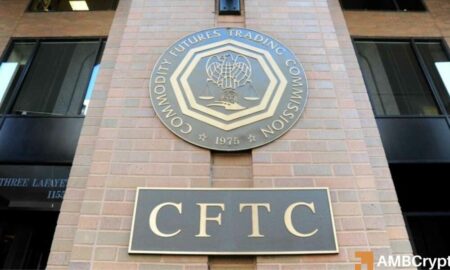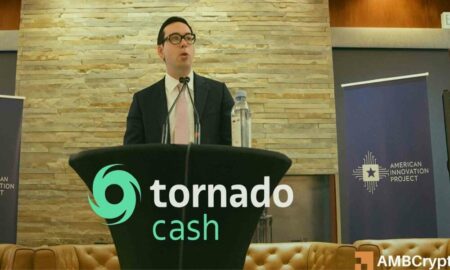Arbitrum’s Market Dynamics: Recent Declines and Future Prospects
Arbitrum (ARB), a notable player in the Ethereum Layer 2 (L2) market, has recently experienced a significant downturn, plunging over 10% in just 24 hours. This drop is notable as it surpasses the broader cryptocurrency market’s decline of 1.75%, which saw total capitalization drop to $3.97 trillion. Several factors contributed to this downturn, including falling funding rates, diminishing open interest, and weakened network activity. Despite these challenges, signs of resilience in total value locked (TVL) indicate that the ecosystem may not be entirely defeated.
Understanding the Price Drop
Recent data from Tokenomist revealed that Arbitrum is preparing to unlock approximately 92.65 million ARB tokens, worth around $40.33 million. This token release represents 2.09% of the already circulating supply. Over the past three months, a total of 277.95 million ARB tokens have entered circulation, increasing the total supply to 5.15 billion. This recent uptick, amounting to a 1.79% rise, has created short-term bearish pressure, contributing to the current market sentiment surrounding Arbitrum. The situation is exacerbated by declining network activity, as evidenced by significantly reduced transaction fees and newly verified contracts.
Diminished Network Activity
Recent on-chain data highlights the troubling decline in Arbitrum’s network activity. As of the latest update, total transaction fees plummeted to 11.62 ETH—a staggering 74% decrease. Additionally, transaction volume fell by 4.72%. The number of new addresses created was down 46%, and only 127 contracts were verified daily, marking an 11.8% decline. These metrics collectively paint a bleak picture regarding user engagement and adoption of the Layer 2 solution, suggesting that market participants are pulling back on their use of Arbitrum.
Technical Analysis: ARB’s Price Struggles
On the technical front, ARB has struggled to maintain its position above the $0.48 flip zone, especially after facing rejection at approximately $0.60. Although a sell-off began on August 15, leading into the next day, the broader price structure still maintained a bullish sentiment, thanks to the token trading above a key 10-day ascending trendline. Indicators such as the Bollinger Bands suggest heightened volatility, further complicating the outlook. The MACD indicator, which recently turned red, shows that sellers are gaining traction over buyers, adding to the bearish sentiment. If ARB can hold the crucial $0.48 level, it may attempt to rally back toward $0.60. Conversely, failure to do so could lead to a downturn towards $0.43 or even lower.
Resilience in TVL and Trading Volume
Despite the recent sell-off and declining sentiment, Arbitrum recorded a robust total trading volume of $1.70 billion. This includes significant decentralized exchange (DEX) trading volume of $905 million and perpetuals (perps) trading volume of $870 million. The resilience of these metrics points towards an underlying strength in the ecosystem. Notably, the Total Value Locked (TVL) in Arbitrum reached $5.59 billion, nearing its December 2024 highs and approaching the all-time peak of $6.17 billion. This indicates that, despite short-term price volatility, there remains a stable foundation of capital within the network, suggesting that the downward movement may be more of a temporary correction than a definitive decline.
Conclusion: Future Prospects for Arbitrum
While Arbitrum’s recent price action may raise concerns about its future, the existing data provides a more nuanced perspective. The token’s resilience, reflected in the solid TVL and trading volumes, suggests that investor confidence has not entirely waned. The current market dynamics illustrate the volatility inherent in the cryptocurrency space, particularly for L2 solutions like Arbitrum. Moving forward, key price levels will be critical for traders and investors to monitor. Should ARB maintain the $0.48 level and improve network activity, it could pave the way for an eventual rebound. However, continued declines could pose challenges, warranting a cautious approach from those engaged in the market. As investors navigate this turbulent landscape, understanding both short-term corrections and the underlying fundamentals will be essential for informed decision-making in the evolving cryptocurrency ecosystem.
![Zcash [ZEC]: Open Interest Reaches Multi-Month High – Is a Price Move On the Horizon?](https://icoinmarket.com/wp-content/uploads/2025/08/Kelvin-_90_-1000x600.webp-300x180.webp)







![Zcash [ZEC]: Open Interest Reaches Multi-Month High – Is a Price Move On the Horizon?](https://icoinmarket.com/wp-content/uploads/2025/08/Kelvin-_90_-1000x600.webp-450x270.webp)







